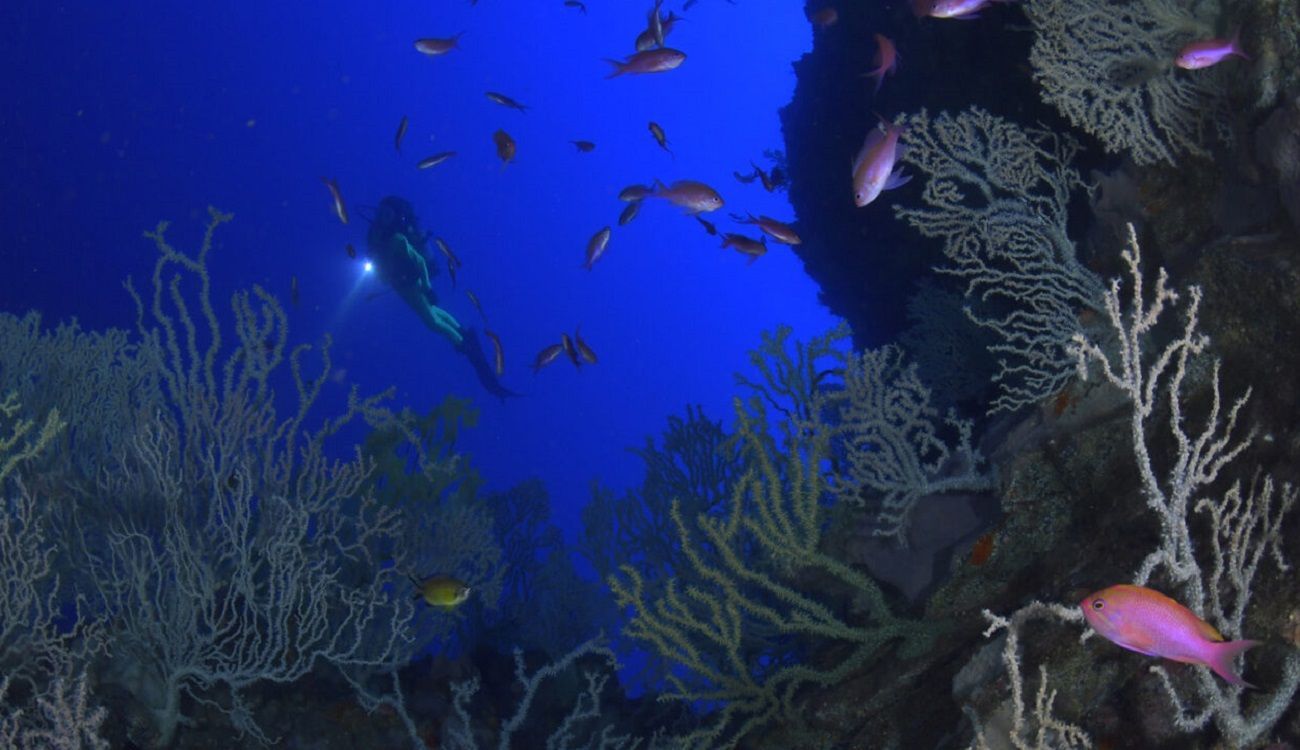Lanzarote has perfect conditions for diving all year round, thanks to the numerous dives that the island offers, but also to the microclimates that are formed, that is, the tide can be bad in Puerto del Carmen, but very good in Playa Blanca, just a few kilometers away.
Specifically, in Lanzarote you can take dives for all levels at a hundred different places, so few people can boast of knowing all of them.
The diving capacity of the island is also reflected in the number of existing diving centres, a figure that exceeds fifty, as well as its great marine fauna, with angel sharks, groupers, tuna, banks of horse mackerel, swallowtail sea perches, seahorses, mongrels and even the odd sunfish.
It is not an island that forces you to do boat dives, which tend to be more expensive, many can be done from the coast, so there is diving for all pockets in Lanzarote.
1. Puerto del Carmen
Besides being an area known for its constant tourism, Puerto del Carmen also stands out for having the place with the most dives in all of Europe, the Playa Chica area. It is a diver's paradise.
The edge of Playa Chica is the dive par excellence, both for beginners and experts, since it has a simple entrance to the sea that you can even do by foot, it also offers a great wealth of marine fauna.
This section has a gentle slope up to 50 meters deep and, thanks to its different platforms, several caves are also formed, such as Cueva de Las Gambas. Also, for those divers with special qualifications, they can go down to 50 meters deep to enjoy the black coral forest, of unparalleled beauty.
This explosion of life can also be seen in waikiki, in the Playa Grande area. This mid-level dive is very comfortable because you can go down the sand to 18 or 20 meters, where one of the shallowest orange coral branches in the archipelago grows. However, for those who want to continue diving deeper, there is another cliff about 30 meters away, with a small cave where there are numerous swallowtail sea perches.
If you like diving around shipwrecks, there are two that are well preserved in front of La Tiñosa dock and at the tip of Barranco del Quíquere. As they do not include great depths, they are good options for beginners. They are quite romantic and you can always fantasise about the story behind their sinking.
2. Playa Blanca
In Playa Blanca, the liveliest divepoints in the area are Las Coloradas cliff, Playa Flamingo and Punta Berrugo. If you are just starting out in this sport you can perfectly try here as they do not go below 20 meters.
Specifically, in Las Coloradas, you will have the opportunity to see crayfish, schools of seabream, groupers and even turtles and barracudas, although it is important to mention that access tends to be organised by boat.
This also happens with the Punta Berrugo dive, where you can enter volcanic caves and enjoy a small sunken ship with the occasional moray eel.
The dive at Playa Flamingo works very similarly to the one at Playa Chica, that is, it is an area for all kinds of levels, since you can start at the beach. It does not have large currents and you will be able to see angel sharks, schools of bogues, trumpetfish and mongrels.
Furthermore, for those who wish to see art under the sea, the perfect place is the Atlantic Museum of Lanzarote, in the Marina Rubicón Port, the first underwater exhibition in Europe by British artist Jason deCaires Taylor, a dive that must be done at least once in a lifetime.
The museum, including sculptures of people from the island, is located at a depth of between 12 and 15 meters under the sea, so even a beginner can enjoy it. The dive that can be done from a boat or from land, although the latter is more difficult as you would have to swim a good stretch.
3. The North
For those who are looking for dives more focused on geology and who do not mind the absence of fauna due to uncontrolled fishing, the perfect place to dive is in the area near the Jameos del Agua.
If this is a spectacular place on the surface, this magnificence is also found underwater, including a very unique landscape that you will not see in other areas.
4. La Graciosa
In La Graciosa, the eighth island of the Canary Islands, you will also find the occasional dive that will leave you speechless.
One of the simplest is La Burrera, with a minimum depth of 18 meters, perfect for Open Water, and a maximum depth of 25 meters, for more expert divers. Access is from a boat, and during the dive you will see banks of African striped grunts.
If you are looking for a somewhat more complicated adventure, you can go to the edge of Las Anclas, with a rock wall that crosses El Río. It should be noted that this is one of the few places that is home to a unique marine species, the black croaker. There you will also see numerous old anchors in the background.
Finally, advanced divers can jump into the Montaña Amarilla dive, with many caves, arches and structures. Also giant anemones, bull rays and forkbeards.
